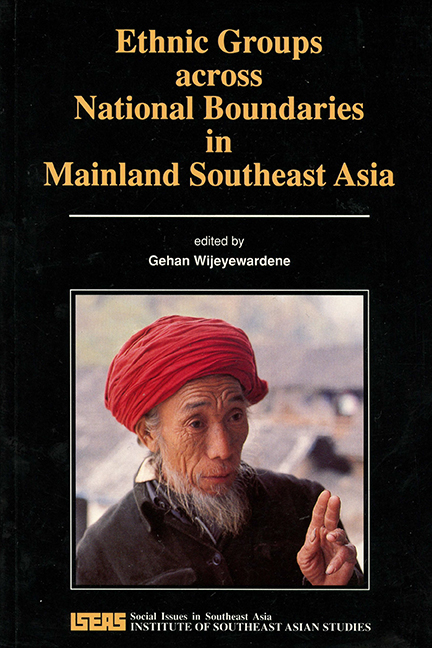Book contents
- Frontmatter
- Contents
- Foreword
- Contributors
- Acknowledgements
- 1 Introduction: Definition, Innovation, and History
- 2 Language and Ethnicity: The Mon in Burma and Thailand
- 3 Thailand and the Tai: Versions of Ethnic Identity
- 4 A Comparative Study of Structure and Contradiction in the Austro-Asiatic System of the Thai-Yunnan Periphery
- 5 Ethnicity, Nationalism, and the Nation-State: The Karen in Burma and Thailand
- 6 Capitalism and the Structure of Yao Descent Units in China and Thailand: A Comparison of Youling (1938) and Pulangka (1968)
- 7 Squatters or Refugees: Development and the Hmong
- 8 Afterword: “Ethnicity” and Anthropology
- Index
- THE EDITOR
7 - Squatters or Refugees: Development and the Hmong
Published online by Cambridge University Press: 21 October 2015
- Frontmatter
- Contents
- Foreword
- Contributors
- Acknowledgements
- 1 Introduction: Definition, Innovation, and History
- 2 Language and Ethnicity: The Mon in Burma and Thailand
- 3 Thailand and the Tai: Versions of Ethnic Identity
- 4 A Comparative Study of Structure and Contradiction in the Austro-Asiatic System of the Thai-Yunnan Periphery
- 5 Ethnicity, Nationalism, and the Nation-State: The Karen in Burma and Thailand
- 6 Capitalism and the Structure of Yao Descent Units in China and Thailand: A Comparison of Youling (1938) and Pulangka (1968)
- 7 Squatters or Refugees: Development and the Hmong
- 8 Afterword: “Ethnicity” and Anthropology
- Index
- THE EDITOR
Summary
In 1960 Leach argued that colonialism had imposed artificial boundaries on a unified ethnographic region which we may see as encompassing parts of northern Thailand, Laos, and Vietnam, the Shan states of Burma, and southwest China. Of course there is a sense in which this is true and important; undeniably the impact of colonialism on the region has been considerable, in economic as well as in political terms, and it seems clear that very different notions of territorialism must have prevailed in the region in the pre-capitalist period, whether these were the notions of the lowland rulers of states and empires, or those of the smaller, more dispersed groups whom Leach rightly depicts as practising various methods of shifting cultivation in less fertile or more “marginal zones”. Leach's analysis was also of value in drawing attention to the role of colonialism in the formation of the modern Southeast Asian nation-state, work which has been built upon by that of Geertz (1980), Tambiah (1976), Anderson (1983), and Keyes (1987). Yet today the border is a reality, and has affected the lives of the ethnic minorities who find themselves on one side or the other or both of it, to a very considerable degree.
The reality of the frontier, and the sovereignty of the nation-state which it symbolizes, has led to the increasing vulnerability of ethnic minorities in border areas to manipulation and exploitation by centrist administrations. At the same time it has led to their increasing strategic importance in terms of the power relations between different states. Much of the trade conducted across these (admittedly permeable) borders is classified as illicit, as is also much of the human movement across them. In the discourse of modern nationalism, one is dealing with economic phenomena classified as “smuggling” and human mobility categorized as “refugee” or “illegal immigrant”, rather than the free movements of commodities and agents which we are to suppose characterized the pre-colonial past.
- Type
- Chapter
- Information
- Ethnic Groups Across National Boundaries in Mainland SEA , pp. 149 - 172Publisher: ISEAS–Yusof Ishak InstitutePrint publication year: 1990

